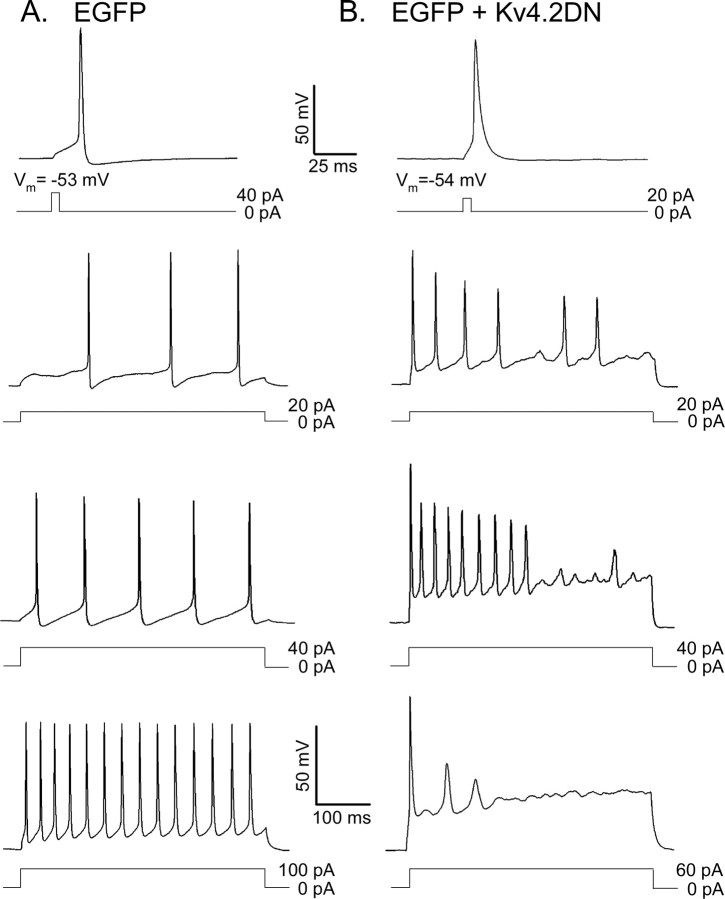Figure 6.
Repetitive firing is altered in Kv4.2DN plus EGFP-expressing cortical pyramidal neurons. Representative action potential waveforms and repetitive firing patterns recorded from EGFP-expressing (A) and Kv4.2DN plus EGFP-expressing (B) cells. Individual action potentials and action potential trains were evoked by 5 and 500 ms depolarizing current injections, as described in the legend to Figure 4. In cells in which IA has been eliminated, the current threshold to evoke an action potential is reduced significantly (p < 0.001) compared with wild-type cells. At low stimulus intensities, cells expressing Kv4.2DN plus EGFP (B) are more excitable than cells expressing EGFP alone (A), as evidenced by the higher firing rates observed in cells in response to low-amplitude current injections. Although the initial firing rate is increased in both EGFP- and Kv4.2DN plus EGFP-expressing cells with higher stimulus intensities, the effects of increasing amplitude current injections are distinct. In EGFP-expressing cells, the firing frequency increases monotonically with the amplitude of the injected current. In Kv4.2 plus EGFP-expressing cells, however, the frequency of firing is increased in response to low-amplitude current injections compared with cells expressing EGFP alone, although firing is often not maintained. In response to large-amplitude current injections, cells expressing Kv4.2 DN plus EGFP actually cease firing.

